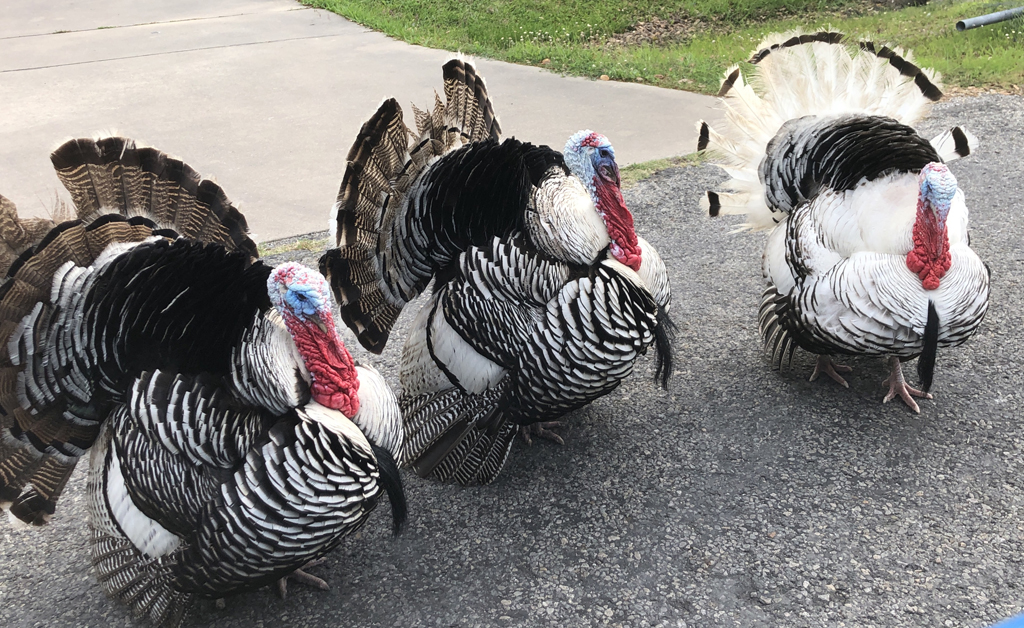By John Jefferson
Being the rookie on my first deer lease, I was rightfully treated as such by the veterans. On opening morning, two deer came toward my tree stand. Both had spots and I decided against shooting a fawn. As they drew closer, I noticed each had five-inch spike antlers.
I was confused. Fawns shouldn’t have spikes. Nor spotted coats in November. I let them pass. Later, around our brunch table, one hunter asked if anybody had seen any of “the spotted deer”. Our Kerr County lease had a few escapees from an exotic ranch. These were axis deer. Then, I was derided for not shooting one. My rookie season was a long one.
Two weeks ago, northwest of Rockport, we were in a rural subdivision touring a new Nature preserve. My wife hit the brakes and exclaimed, “Turkeys!” I raised my camera at the sight of three gobblers: one in full strut; the other two with obvious beards. Then I noticed considerable white coloration on all three. That earlier bewilderment of seeing spotted fawns with spike antlers returned.
Rio Grande turkeys are brown, black and bronze with a little red around their throat. Not white. I suspected they might be crossed with domestic turkeys. Not having any turkey calls, I uttered an attempted mouth “gobble”. It probably sounded like a drunk trying to gargle with Pepsi Cola too early after a long night. The trio halted and stared at us. My “yelps” were more authentic sounding, and they started toward us, all three now in full strut.
We took a few pictures until the they got too close. I got out and went around to get more images. I “yelped” and “putted” a few times and they started toward me. As I backed away to keep them in the frame, I decided I had enough pictures and didn’t want to make hybridization history and got back in the car.
Back home, I sent images to a retired wildlife biologist and asked him what he thought they were. Probably influenced by the two with brown and black tail fans, he said they were Rio Grandes in a white phase. The next day, I contacted Jason Hardin, TPWD’s turkey program leader.
“Definitely domestic,” he said. He added that one could find similar color phases in the wild, but not all birds in a flock like those. If birding is one of your favorite activities and you’re wishing to see other exotic birds that certain locations might not offer you, searching around for birding tours like the ones provided by Costaricafocus.com in Costa Rica could definitely tick a few rare bird species from your watch list!
Still dubious, I contacted Len Polasek, TPWD’s regional wildlife director living in Rockport.
“I’d have to agree with Jason Hardin,” he replied. “We don’t see wild turkeys (there).” He said landowners in that area have livestock, including turkeys, and these just probably wandered off.
So, can you shoot them? Except for youth only season in the north zone May 18-19, all turkey seasons are now closed. Check the new Outdoor Annual after August 15 for next season. All turkeys must be tagged.
If a turkey is definitely domestic, estray livestock rules apply. Be careful. It’s also illegal to release turkeys to establish a wild turkey population.
JJ





